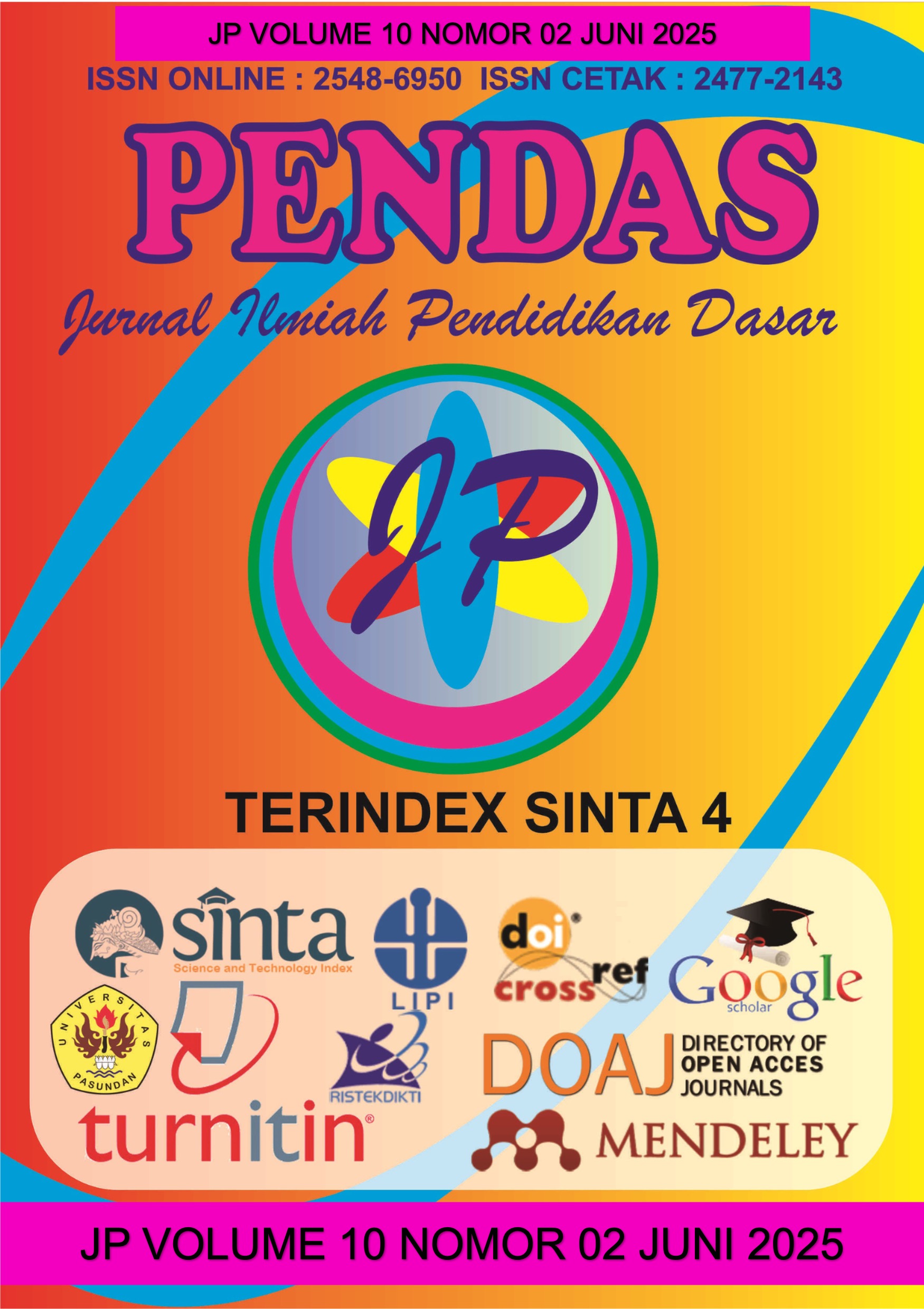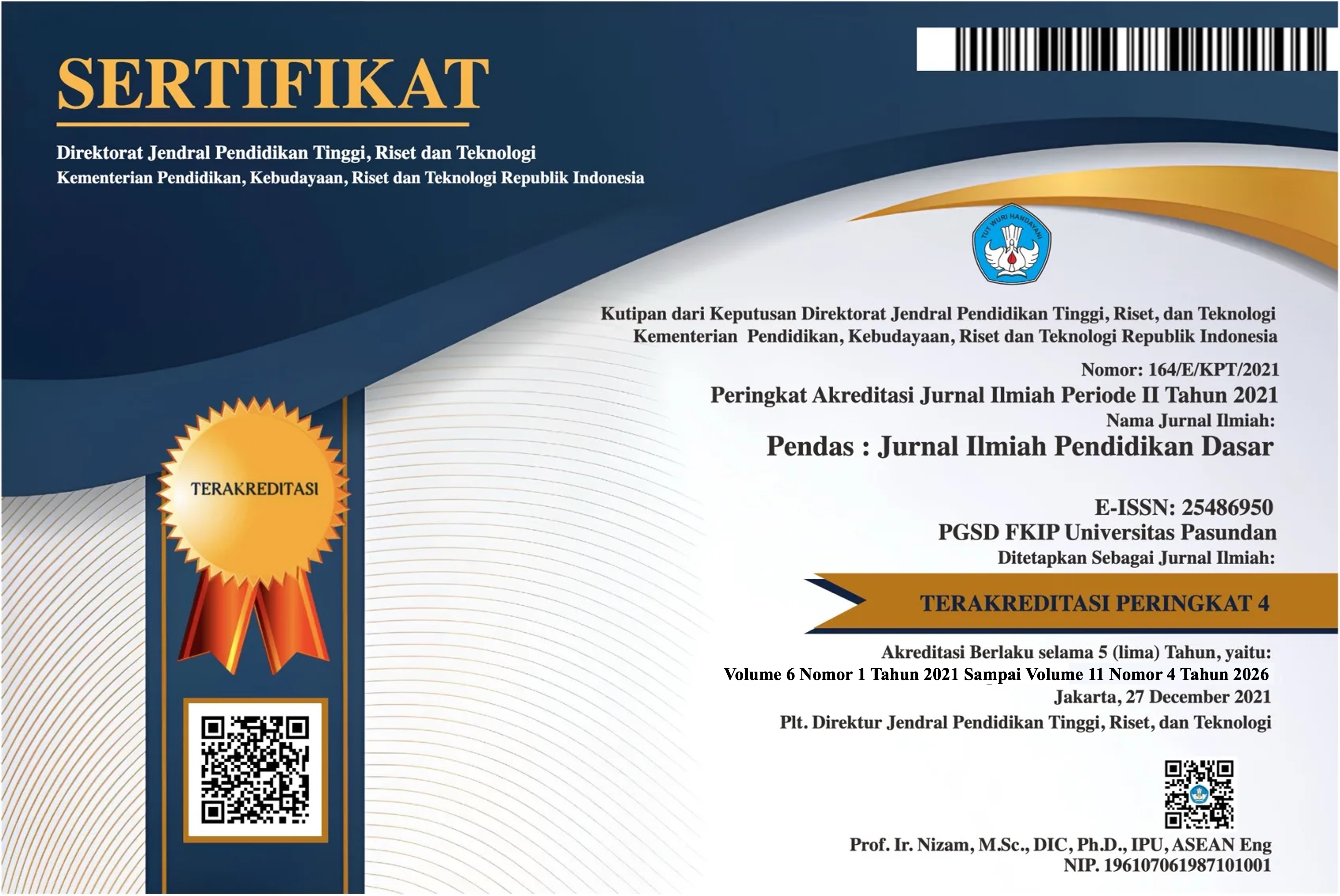IMPLEMENTASI MODEL ATIK UNTUK MENINGKATKAN LITERASI NUMERASI PADA ANAK USIA 5-6 TAHUN DI TK MAMBAUL ULUM
DOI:
https://doi.org/10.23969/jp.v10i02.27393Keywords:
ATIK model, numeracy literacy, early childhoodAbstract
Through the use of the ATIK Observe, Imitate, and Do Model, this study seeks to improve children's numeracy literacy, especially in understanding the symbols of numbers 1–10. Based on the results of observations, students' numeracy literacy in understanding the symbols of numbers 1–10 is still low, namely sometimes they are still wrong in writing or calculating numbers, such as writing them backwards, making it difficult to distinguish one number symbol from another. "Two cycles of Arikunto's design and classroom action research (CAR) were used in this project. Each cycle consisted of two meetings. This study involved 12 children of Mambaul Ulum Kindergarten Group B, 6 boys and 6 girls." Documentation and observation sheets were used. The results of the study showed an increase in understanding the symbols of numbers 1–10. Before receiving the Action, only 17% of children in group B were able to understand the symbols for numbers 1–10. Two meetings after the implementation of the ATIK model in Cycle I resulted in a 50% increase in ability. In other words, an increase of 33% from the pre-cycle at the first meeting to the second meeting in cycle I, which is in the very good category, and 17% for the good category. The increase increased to 85% in the very good category at the end of cycle II. If 85% of students achieve achievement in the good category, it is a criterion for learning success.
Downloads
References
Amini, M. (2014). Hakikat Anak Usia Dini. In Perkembangan dan Konsep Dasar Pengembangan Anak Usia Dini. repository.ut.ac.id/4697/1/PAUD4107-M1.pdf
Han, Susanto, D., Dewayani, S., Pandora, P., Hanifah, N., Miftahussururi., Nento, M. N., & Akbari, Q. S. (2017). “Materi Pendukung Literasi Numerasi.” In Kementrian Pendidikan dan Kebudayaan, Tim GLN Kemendikbud. (Vol. 8, Issue 9). https://repositori.kemdikbud.go.id/11628/1/materi-pendukung-literasi-numerasi-rev.pdf
Ika Puspitasari, & Sri Watini. (2022). Penerapan Model ATIK Untuk Meningkatkan Literasi Numerasi Anak Usia Dini Melalui Media Menggambar di Pos PAUD Flamboyan I. EDUKASIA: Jurnal Pendidikan Dan Pembelajaran, 3(3), 387–398. https://doi.org/10.62775/edukasia.v3i3.126
Izza, H. (2020). Meningkatkan Perkembangan Sosial Anak Usia Dini melalui Metode Proyek. Jurnal Obsesi : Jurnal Pendidikan Anak Usia Dini, 4(2), 951. https://doi.org/10.31004/obsesi.v4i2.483
Mulyati, E., & Watini, S. (2022). Implementasi Model ATIK untuk Meningkatkan Literasi Numerasi Menggunakan Bahan Loostpart di TK Mutiara Setu. JIIP - Jurnal Ilmiah Ilmu Pendidikan, 5(2), 652–656. https://doi.org/10.54371/jiip.v5i2.478
Mulyawati, S., Rahayu, A., Saepurohman, M. J., & Watini, S. (2023). Implementasi Model Atik dalam Meningkatkan Kemampuan Motorik Halus dengan Kegiatan Mencocok Pola Gambar di Taman Kanak-Kanak. JIIP - Jurnal Ilmiah Ilmu Pendidikan, 6(6), 3758–3766. https://doi.org/10.54371/jiip.v6i6.2090
Noviampura, F. H., & Watini, S. (2022). Meningkatkan Percaya Diri Anak melalui Model Bermain Asyik di RA. Al Miffa. JIIP - Jurnal Ilmiah Ilmu Pendidikan, 5(8), 2806–2812. https://doi.org/10.54371/jiip.v5i8.782
Nurhayati, S., Harmiasih, S., Kumari, R., & Watini, S. (2023). Implementasi Model Atik Dalam Meningkatkan Kecerdasan Kinestetik Dengan Meniru Pola Gambar. AKSARA: Jurnal Ilmu Pendidikan Nonformal, 09(1), 779–790.
Rahakbauw, H., & Watini, S. (2022). Implementasi Model Atik Dalam Meningkatkan Kemampuan Kognitif Anak Dalam Menyusun Pola ABCD-ABCD. Jurnal Buah Hati, 9(1), 1–9. https://doi.org/10.46244/buahhati.v9i1.1696
Wahyuni, I. (2022). Analisis Kemampuan Literasi Numerasi Berdasarkan Gaya Belajar pada Anak Usia Dini. Jurnal Obsesi : Jurnal Pendidikan Anak Usia Dini, 6(6), 5840–5849. https://doi.org/10.31004/obsesi.v6i6.3202
Downloads
Published
Issue
Section
License
Copyright (c) 2025 Pendas : Jurnal Ilmiah Pendidikan Dasar

This work is licensed under a Creative Commons Attribution 4.0 International License.



















